Graphics Design
5 Best Graphic Design Software for MacBook Users in 2024

5 Best Graphic Design Software for MacBook Users in 2024
Graphic design software for MacBook refers to a process where one uses art and technology to pass message with the help of visuals. If you are a fan of MacBook you already know that Apple’s slim and effective machines are ideal for design. However, if you want to get the absolute best from your MacBook, then it is time to seek the proper graphic design software for MacBook. In 2024, there are various choices possible and each is equipped with proper set of tools and functionalities to suit the varied requirements of the design professionals.
And in this article, we are going to make a step by step **review of the five best graphic design software for MacBook ** and direct You to specific software for different levels, from a complete beginner to a professional.
Outline
- Introduction
- Top Considerations for Choosing Graphic Design Software
Compatibility with MacOS
Features and usability
Pricing
Learning curve
- 1. Adobe Photoshop
Key features
Pros and cons
Ideal for
Pricing
- 2. Adobe Illustrator
Key features
Pros and cons
Ideal for
Pricing
- 3. Affinity Designer
Key features
Pros and cons
Ideal for
Pricing
- 4. Sketch
Key features
Pros and cons
Ideal for
Pricing
- 5. CorelDRAW
Key features
Pros and cons
Ideal for
Pricing
- Which Software is Best for Beginners?
- Which Software is Best for Professionals?
- Free vs. Paid Graphic Design Software
- Conclusion
- FAQs
Introduction
Graphic design software for MacBook whether one is designing a logo or a website or illustrating a highly complex vector graphic, selection of the correct software is impeccable to one’s creativity. As on now there are lots of graphic design programs available in the market, and deciding which one will work with your MacBook as well as for your project, can really be confusing. That’s why, to help you avoid much searching and choice, we have found the **top 5 graphic design software for Mac, 2024**.
Graphic design software for MacBook here you will find out about more traditional software like Adobe Photoshop and Illustrator as well as newer tools ranging from Affinity Designer to Sketch. At the end of this tutorial, you’d be fully aware of the software that matches your design preferences and needs.
Top Considerations for Choosing Graphic Design Software
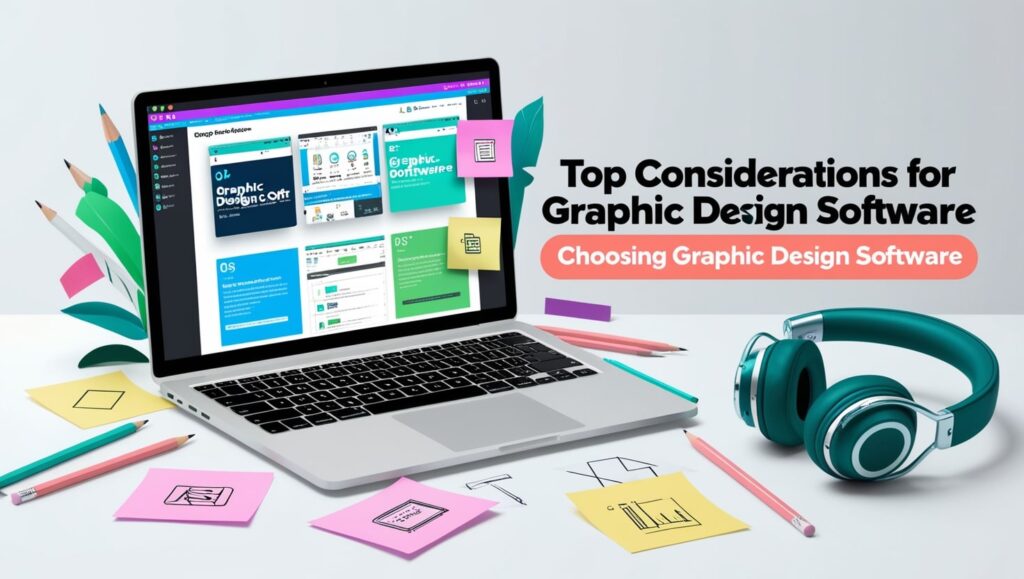
But, now let’s brief, what criteria you ought to take into consideration while opting for the best design software?
- Compatibility with MacOS: Make sure that the Graphic design software for MacBook is compatible with your Mac operational system.
- Features and Usability: Try to identify those that neatly sit in between being excessively complicated as well as being overly simplistic.
- Pricing: They may be costly, and some others are free, and others may be available only for a one-time payment.
- Learning Curve: Graphic design software for MacBook most importantly, the time it may take before one can master the software is determinable irrespective of the level of expertise one has.
Now, let’s look at the best Graphic design software for MacBook user in 2024.
1. Adobe Photoshop
![]()
Adobe Photoshop remains the market leader in graphic design software for MacBook and for a good cause. One great thing about this program is it is almost all comprehensive, providing a lot of tools useful for almost anyone – photographers, illustrators, web designers, and the like.
Key Features
- Advanced photo editing tools
- Supporting Layers, masks and blending modes
- 3D design capabilities
- This set includes a brush library for digital painting.
- Neural filters: the possibilities of AI in post-production
Pros
- Industry standard
- Evaluating relatively limitless online and tutorial materials
- Messages about everything from updated content to new features that are part of the application.
Cons
- Expensive subscription model
- Greater difference between performance novice and competitor
Ideal for
- These professions include; professional designers, photographers and digital artists.
Pricing
- Adobe Photoshop can be downloaded by using Adobe Creative Cloud, where it is the main program and the cost starts from $20.99 monthly.
2. Adobe Illustrator

Graphic design software for MacBook if you are into vector graphics, look no further, **Adobe Illustrator** is one for the books. Illustrator is especially suitable in producing anything starting from logos, up to intricate illustrations and accurate scalable vector images.
Key Features
- Vector-based drawing tools
- Blend with other Adobe products without any hitch
- Excellent typography tools
- It can be observed that bright, vivid colour and gradient capabilities are well established.
- Flexible art for both printed and electronic version
Pros
- Strong functions for the manipulation of vectors
- fit for logos, icons as well as illustrations
- Easy to use for professional Graphic designers
Cons
- Subscription-only model
- Data loading can be a bit demanding on the earlier versions of MacBooks.
Ideal for
- joint illustrators, artists of logo designs, and branding specialists
Pricing
- Accessible from Adobe Creative Cloud starting at $20.99 per month.
3. Affinity Designer
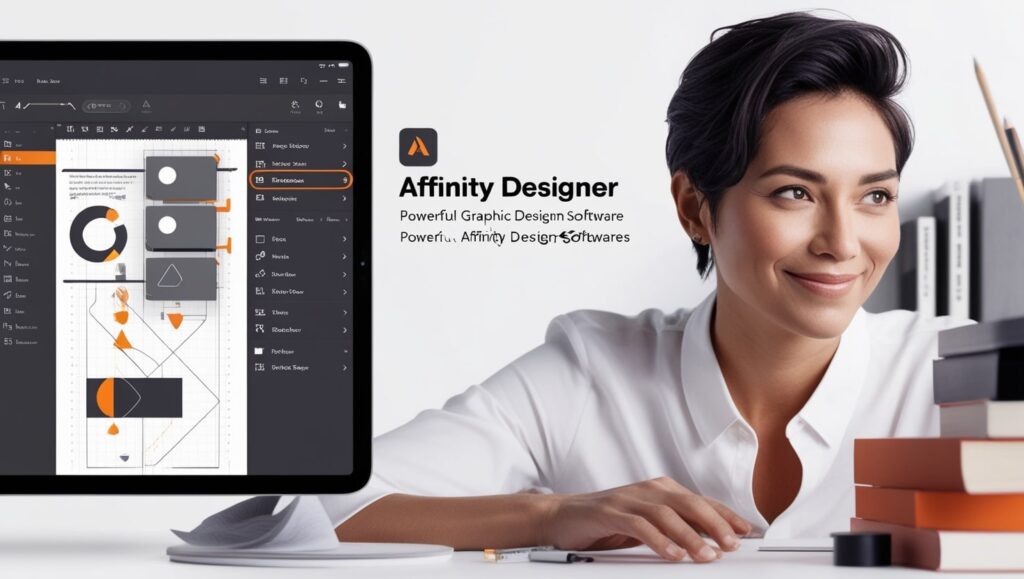
Affinity Designer is a graphic design software for MacBook cheaper version of Adobe Illustrator that allows its users to do almost as many things just without the monthly payments to use the tools. It doesn’t cost as much as some of its more mainstream counterparts and is particularly popular with freelancers and small studios.
Key Features
- Actual performance and non-degradation experience
- I can switch effortlessly from working in a vector workspace to a raster workspace and vice versa.
- Pay once and use the service without needing to pay for subsequent months or years.
- High power zoom for fine work
Pros
- Cost-effective
- Clean and intuitive interface
- Ideal to be used in both vector and raster environments
Cons
- Not as many modes as Illustrator.
- Does not have the rich set of plugins that Adobe does
Ideal for
- Independent workers, sole traders, and designers who work under cost constraints
Pricing
- It only costs $54.99 once to have access this database without any monthly fees to pay.
4. Sketch

Graphic design software for MacBook: Sketch is targeted to UI/UX designers and is on the list of the best tools to create websites and applications interfaces. Owing to its simplicity and ability to encourage the integration of groups working on a project, the tool fits well for teamwork in digital projects.
Key Features
- Tailored for UI/UX design
- Graphic user interface and it has features as in drag and drop type of interface.
- Integrated technologies that promote working together on a project in real time and with the inclusion of feedback features.
- CSS for collaborative academic work environments
Pros
- Intensively celebrities, focused and highly thus, guest and communities.
- Collaboration tools offered due to cloud computing
- Often replenished with new features related to UI/UX
Cons
- Reduced value for print or illustration graphic design
- Additional plugins may be needed for enhanced ability.
Ideal for
- This course will be suitable for UI/UX designers, web developers, and digital product designers
Pricing
- Instead, Sketch runs as a subscription service that costs $9 per month for the individual and $90 for the team.
5. CorelDRAW

**CorelDRAW** is a flexible tool for the graphic design containing vector illustration, layout, and photo editing tools. This is a long standing competitor to Adobe, which has a range of tools geared toward professional designers.
Key Features
- Useful interface elements for vectors
- Multiple Tiers and Multiple Pages
- Over color and typography, clients would be in a position to have very precise control.
- Assistance is provided in terms of both vector and raster graphic formats.
Pros
- User-friendly interface
- Ideal in managing vector and raster graphic designs as well.
- One-time purchase available
Cons
- Not very compatible with other graphical software applications
- Compared with cloud solutions, it has fewer collaborative applications.
Ideal for
- Working professionals who want a single design solution for both print and web design
Pricing
- Currently, there is an option to buy a license for $499 and choose charged $34.99 monthly subscription as well.
Graphic design software for MacBook while there are several great pieces of software for learning how to code, the better question might be, which software is best for beginners who hope to eventually transition to working at an experienced level in a code-intensive career?
Graphic design software for MacBook if you are just entering this realm, then two tools that are perfect for you are **Affinity Designer** and **Sketch**. Each of them is characterized by the simple navigation and relatively low cost, while not limiting in features. Sketch is most valuable if you work on digital/web design.
Which Software is Best for Beginners?

Graphic design software for MacBook for mature designers, **Adobe Photoshop** and **Illustrator** are still the hot applications. Due to their extensive tool palettes, sophisticated functionalities, and regular enhancements, they suit professionals requiring high Level performance. CorelDRAW is also another ideal software for those who do not want to work with subscriptions but rather have an ideal one-time purchase.
Which Software is Best for Professionals?
Graphic design software for MacBook for those who do not want to pay or are just starting their designing career, there are many options of free graphic design tools such as **GIMP** and **Inkscape**. However, paid software is often much more powerful, provides more comprehensive support and is updated regularly. If you are serious about a design career or any professional work, using paid software like **Adobe Creative Cloud** or **Affinity Designer** can enhance a lot of your work efficiency and results.
Conclusion
Graphic Design Software for MacBook selecting the app that is ideal for you in 2024 depends solely on your preferences, concentration on a specific kind of design, and the sum that you are willing to spend. **Adobe Photoshop** and **Illustrator** remains as the best if you want a full package option for the professional, while **Affinity Designer** gives a cheaper option for the new designers as well as for the professional who need a good graphic design tool. **Sketch** is preferred by the UI/UX designers, and **CorelDRAW** will be beneficial for designers who work in different fields. Go slow, work with campaigns, and locate the software that allows for the pinnacle of creativity.
FAQs
- What is the best free graphic design software Mac you can use today?
There are also free ones such as GIMP though it is more hard coded than many of the paid software.
- Are these programs compatible with older models of MacBook?
Yes, but working in programs such as Photoshop and Illustrator on old models and with large files, it may be slower.
- Does these software options have cloud storage?
Some apps have a native cloud storage like Adobe Creative Cloud and Sketch while others like Affinity Designer have their own cloud services.
- Which is the simplest program to use in graphic designing for a newbie?
Affinity Designer and Sketch the best graphic Design Software for MacBook are easy to use and can be recommended for everyone, particularly if you’re aimed towards vector or UI/UX design.
- Could these tools be used for the UI/UX context?
Yes, Sketch is used mostly for UI/UX designing, though Adobe XD and Illustrator often come into use in the same domain.
Graphics Design
15 Freelance Graphic Design Tips to Boost Your Career in 2025
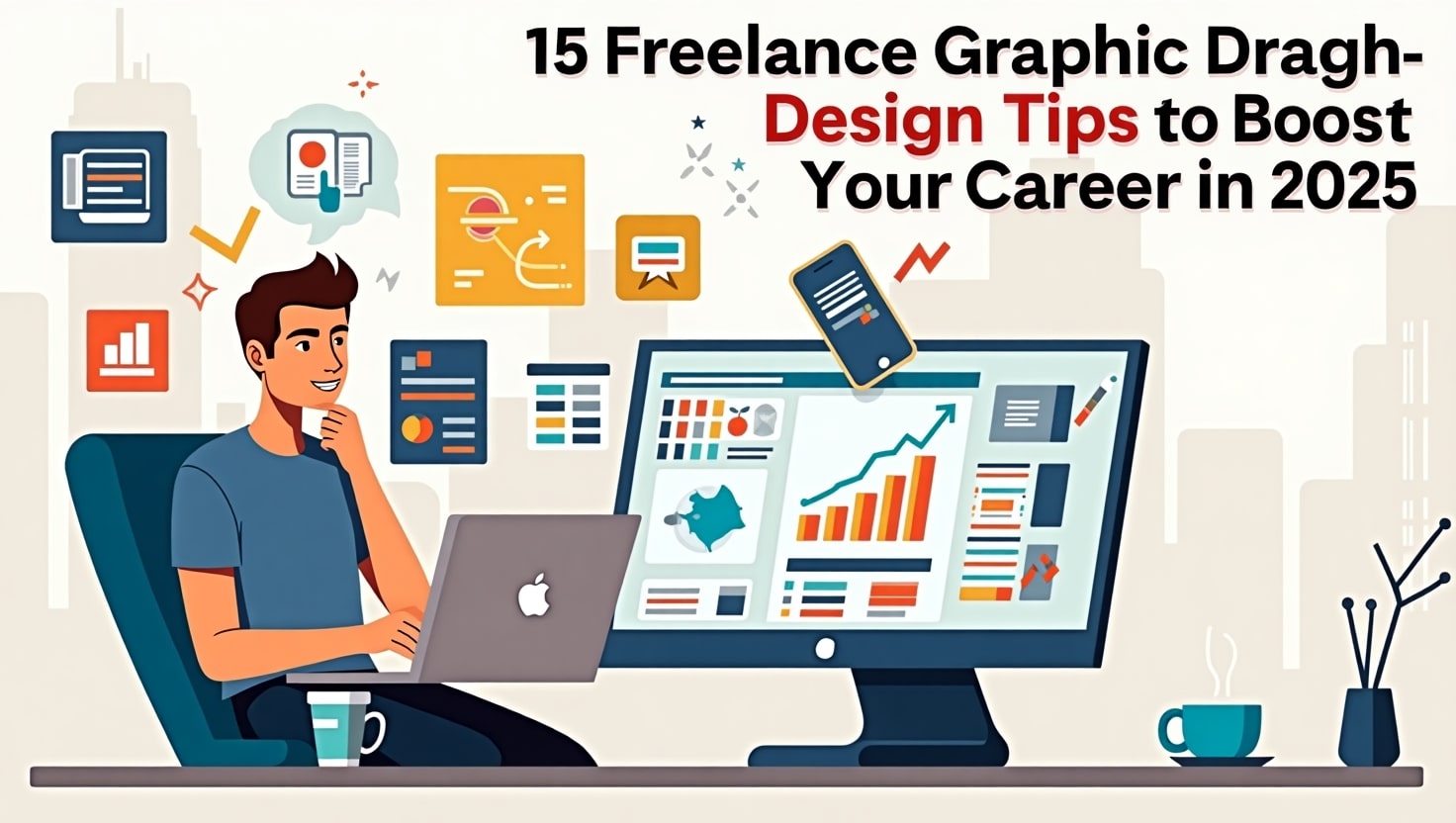
15 Freelance Graphic Design Tips to Boost Your Career in 2025
Introduction: Why Freelancing Is Booming in 2025
The freelance graphic design tips economy is exploding—and graphic designers are at the heart of it. In 2025, remote work continues to dominate the creative industry. Businesses, startups, and even content creators are constantly looking for high-quality visual content to communicate their brands. From social media graphics and websites to product packaging and logos, freelance graphic designers are more in demand than ever before.
Why? Flexibility, creativity, and cost-efficiency. Hiring freelancers allows companies to scale design work without the overhead of full-time salaries, while freelancers gain freedom over when, where, and how they work.
But success doesn’t come just by being good at design. It takes business savvy, communication skills, marketing, and persistence. In this comprehensive guide, you’ll find 15 expert-backed freelance graphic design tips to help you stand out and succeed in 2025.
Tip #1 – Build a Killer Portfolio That Sells for You
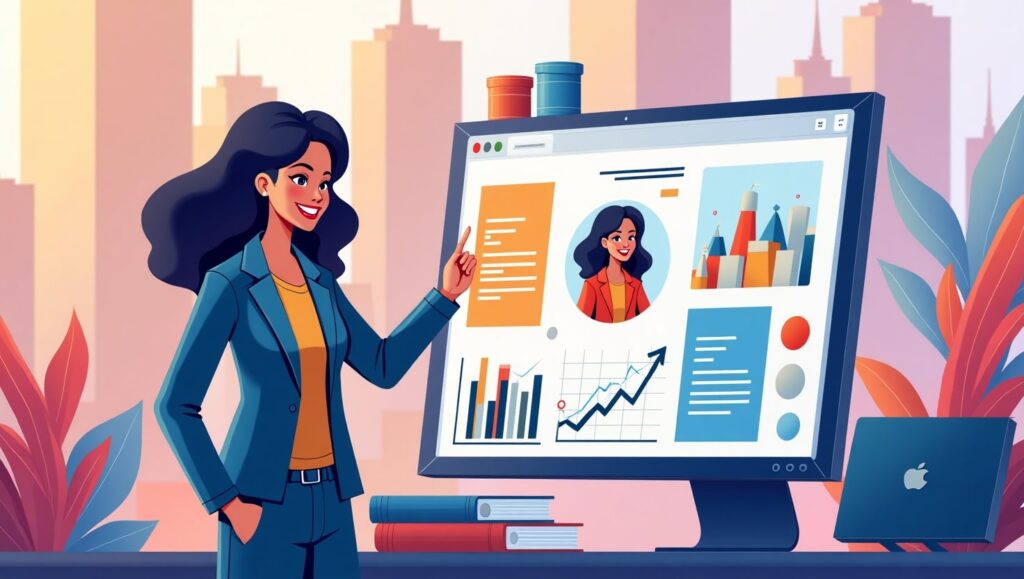
Your portfolio is your personal storefront of freelance graphic design tips. It’s not just a collection of pretty images—it’s your proof of value. In 2025, clients want to see results-driven design:
- Case studies that show how your designs improved conversions or brand awareness.
- Real client testimonials tied to specific projects.
- A mix of personal and client work to show creativity and versatility.
Use platforms like Behance, Dribbble, or your own website. Make sure it’s mobile-friendly, loads fast, and tells a story. Keep updating it with your latest and best work. Don’t include every project—only those that align with the kind of clients you want to attract.
💡 Pro Tip: Add context to each project. Don’t just show the design—explain the client’s problem, your approach, tools used, and the results.
Tip #2 – Use Contract Templates to Protect Yourself
One of the fastest ways to lose time, money, and peace of mind is to work without a contract. Whether it’s a $50 logo or a $5,000 branding package, always have a signed agreement.
A good contract should include:
- Scope of work (what’s included and what’s not)
- Timeline and deadlines
- Payment terms (50% upfront is common)
- Revision policy
- Ownership and usage rights
Use platforms like Hello Bonsai, AND.CO, or Docracy to get started. These services offer customizable, legally reviewed freelance contracts. Even a simple Google Docs template is better than nothing.
Tip #3 – Learn How to Price Your Services Strategically

Freelance graphic design tips Pricing is tricky for every freelancer—especially in the beginning. Charge too little, and you look inexperienced. Charge too much, and you risk scaring away potential clients.
Start by calculating your minimum hourly rate using this formula:
(Monthly Expenses + Profit Goal) ÷ Billable Hours = Base Hourly Rate
Then, experiment with project-based pricing and value-based pricing as you grow. Value-based pricing means charging based on the impact your work creates. For example, a logo for a small bakery and one for a tech startup shouldn’t cost the same, even if both take 5 hours.
Research what others charge in your niche on platforms like Upwork, Fiverr Pro, or Freelancer’s Union reports.
Tip #4 – Focus on One Niche (At First)
Generalists struggle more than specialists—especially when starting out. If you market yourself as “a designer for everyone,” you’ll likely end up attracting no one.
Instead, pick a niche such as:
- Logo & brand identity design for startups
- Social media design for beauty brands
- E-commerce packaging for sustainable products
- T-shirt and apparel design for streetwear brands
By narrowing down, you:
- Attract more targeted leads
- Become more confident in your pricing
- Build authority faster
When you started gives someone freelance graphic design tips you’ve established yourself in one niche, you can expand your services or pivot as needed.
Tip #5 – Use Social Proof to Build Trust
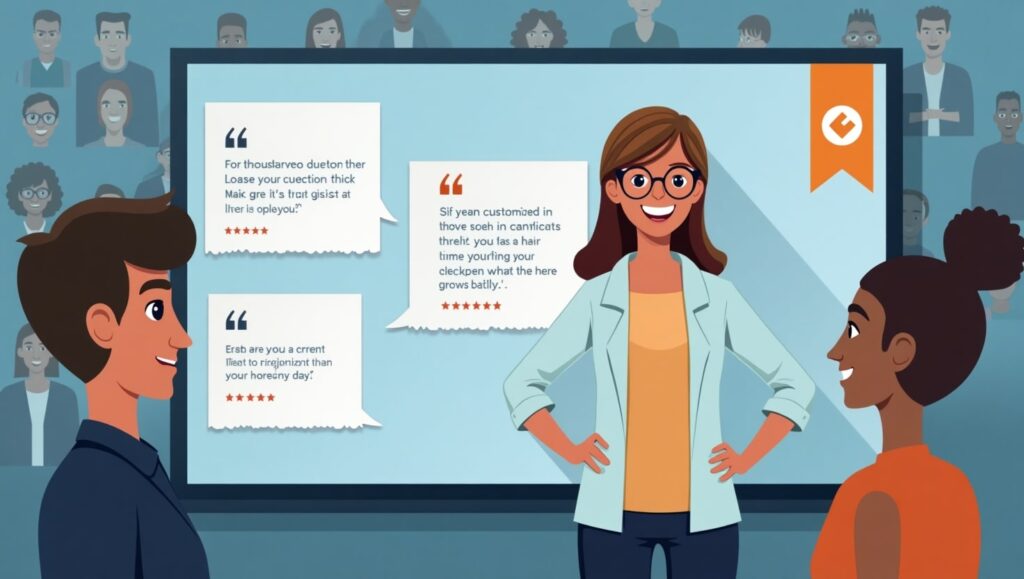
In the freelance world, trust is currency. Social proof—like reviews, testimonials, case studies, and client logos—tells potential clients, “Others trust me. You should too.”
How to collect social proof:
- Ask for testimonials after successful projects.
- Capture email feedback and turn it into quotes.
- Post client shoutouts and reviews on your portfolio and social channels.
- Include before-and-after results or transformation stats.
Tools like Trustpilot, Clutch, and Google Reviews can help build credibility when working with international clients.
Tip #6 – Network in the Right Places
Freelance graphic design tips who network smartly build thriving careers. You don’t need a massive following—you need the right people to know you.
Places to connect with potential clients:
- LinkedIn: Optimize your profile, post helpful content, and DM leads.
- Twitter/X: Follow founders, startups, and marketers in your niche.
- Facebook Groups: Join industry-specific groups for job leads.
- Design communities: Behance, Dribbble, DeviantArt, or Reddit (r/freelance, r/designjobs)
You don’t have to be salesy—just be visible and helpful. Share your insights, process, and design stories regularly.
Tip #7 – Invest in Essential Tools
Your toolkit can boost or block your freelance graphic design tips. In 2025, here are tools most freelancers rely on:
Design Tools
- Adobe Photoshop & Illustrator – Industry standard
- Figma – UI/UX and collaborative design
- Affinity Designer – Affordable and powerful
- Canva Pro – Quick mockups and templates
Project Management & Admin
- Notion / Trello – Project planning and to-do tracking
- Clockify / Toggl – Time tracking
- Wave / QuickBooks – Invoicing and accounting
- Google Workspace – Emails, Docs, Drive
Stay organized to freelance graphic design tips avoid burnout and impress clients with professionalism.
Tip #8 – Set a Routine and Respect Your Time
Freelance graphic design tips often work more hours than employees—because they blur boundaries. Set working hours that match your lifestyle and stick to them. Create a structure for your day:
- Morning: Admin, emails, planning
- Midday: Deep creative work
- Late afternoon: Revisions or meetings
- Evening: Learning or rest
Use Pomodoro timers and digital calendars to stay on track. Taking breaks, setting priorities, and knowing when to say “no” are all part of time mastery.
Tip #9 – Learn the Business Side of Freelancing
Freelance graphic design tips is your craft. But business is your engine. You need to know how to:
- Write proposals
- Send invoices and track payments
- Negotiate contracts
- Market yourself online
- Pay taxes and track expenses
Many designers learn the hard way by making costly mistakes. Speed up the learning curve with resources like:
- “The Freelancer’s Bible” by Sara Horowitz
- Freelance Business Bootcamps on Skillshare
- YouTube channels like The Futur or Roberto Blake
Tip #10 – Create a Strong Personal Brand

A personal brand is how people perceive you—even before they hire you. In a competitive field, branding sets you apart.
Steps to build your brand:
- Create a consistent logo, color scheme, and typography
- Use the same username across platforms
- Share your process, behind-the-scenes content, and success stories
- Define a mission (Who do you serve? What problems do you solve?)
When people see your name, they should immediately freelance graphic design tips associate you with a specific design style or industry niche.
Tip #11 – Stay Updated With Design Trends
Trends in typography if freelance graphic design tips, color schemes, layouts, and platforms change rapidly. What worked in 2023 might look outdated in 2025. Stay sharp by:
- Following top designers on Instagram, Behance, and Pinterest
- Reading blogs like CreativeBloq, Smashing Magazine, and Adobe Creative Cloud Blog
- Joining online classes on platforms like Domestika, Coursera, and Udemy
- Participating in design challenges (e.g., #DailyLogoChallenge, 36 Days of Type)
The more you evolve, the more valuable you become to clients looking for fresh, modern visuals.
Tip #12 – Offer More Than Just Design
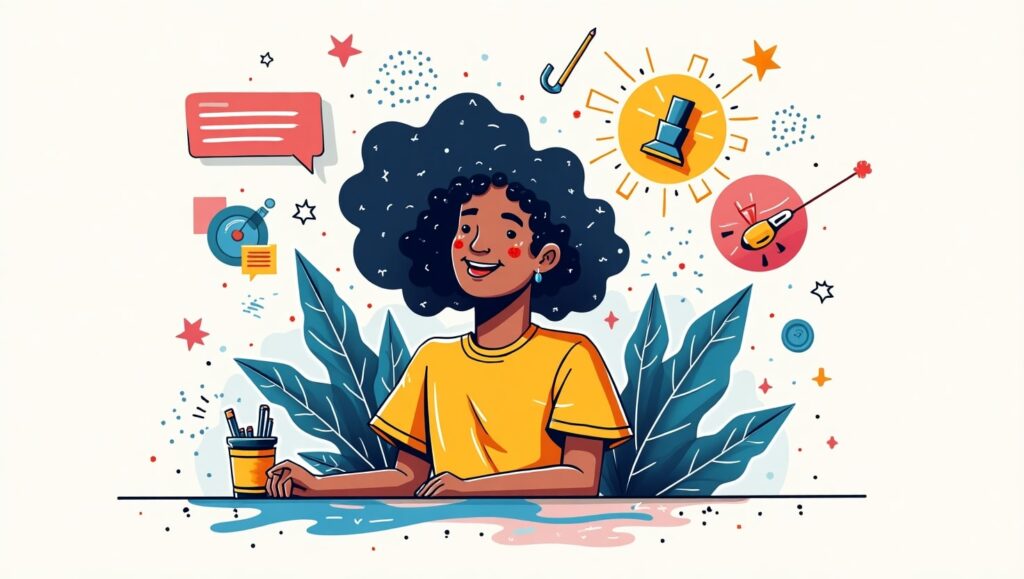
Think beyond the canvas. Many clients need more than a beautiful design—they want strategy, branding advice, content help, and implementation.
You can increase your income by offering:
- Brand style guides
- Social media kits
- Copywriting support
- Print file preparation
- UX strategy
Even packaging your services into design bundles (e.g., logo + business card + brand guide) can help you earn more while providing convenience to clients.
Tip #13 – Turn Projects Into Case Studies
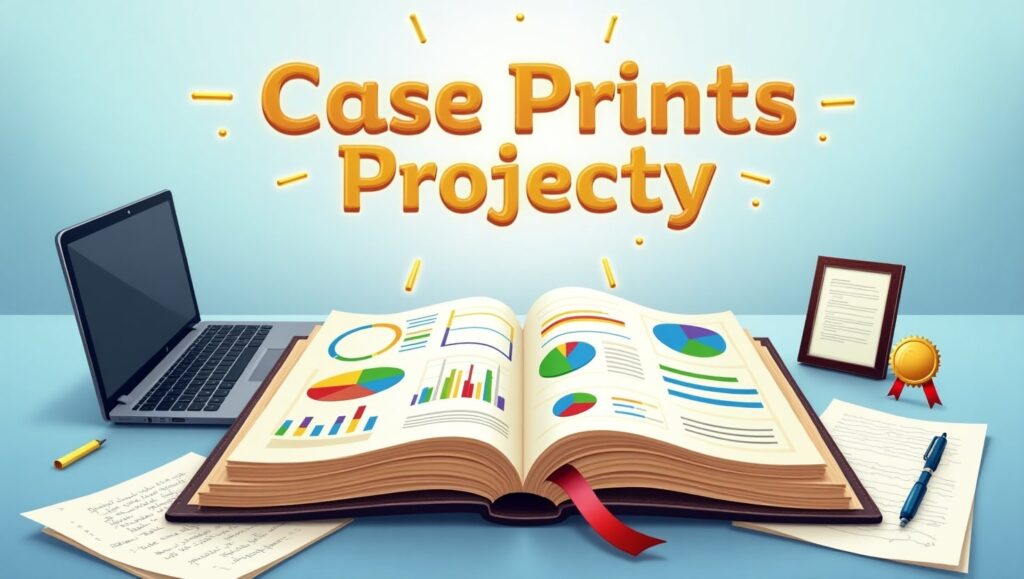
Anyone can show a logo. But telling the story behind the design sets you apart.
How to write a mini case study:
- The Client: Who they are and what they do
- The Challenge: What problem were they facing?
- The Solution: How did you approach the design?
- The Result: What impact did it make? (metrics if possible)
- The Testimonial: What did the client say?
Case studies show future clients that you’re more than a designer—you’re a problem solver.
Tip #14 – Ask for Referrals and Repeat Work
Word-of-mouth is still the most powerful form of marketing. After a successful project, ask:
“Do you know anyone else who might need graphic design services?”
Stay in touch with past clients. Send holiday greetings, share your latest work, or offer special discounts to encourage repeat projects.
If you impress someone once, there’s a high chance they’ll come back or refer you to others.
Tip #15 – Stay Consistent and Keep Learning
Freelance graphic design tips success takes time. You might go weeks without clients or face sudden rejections. That’s normal. The key is to stay consistent:
- Keep marketing even when you’re busy
- Keep learning even when you’re skilled
- Keep delivering even when it’s difficult
Freelancing is a marathon, not a sprint. Stay humble, keep building, and trust the process.
Where to Find Clients in 2025

Here are some reliable platforms and places to get freelance gigs:
| Platform | Best For |
| Upwork | Long-term contracts & serious clients |
| Networking, direct leads | |
| Fiverr Pro | Quick jobs, brand exposure |
| Toptal | Premium clients, strict vetting |
| Behance | Portfolio views + job listings |
| 99Designs | Design contests, niche projects |
| Design Facebook Groups | Networking and job postings |
Best Tools for Freelance Designers in 2025
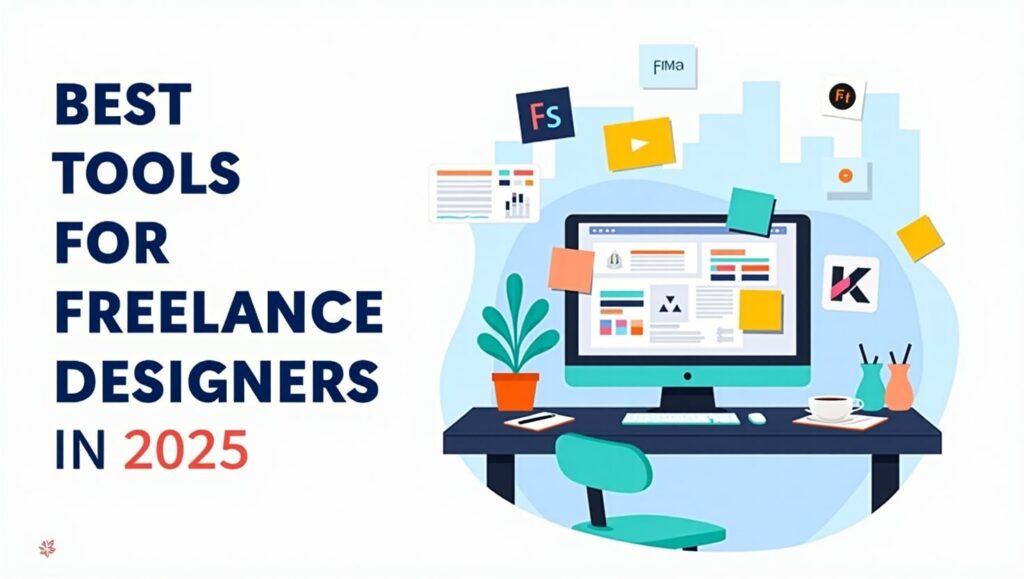
| Category | Tools |
| Design | Adobe CC, Figma, Affinity, Canva Pro |
| Admin | Notion, Trello, ClickUp |
| Invoicing | Wave, Payoneer, QuickBooks |
| Time Tracking | Toggl, Clockify |
| Contracts | Hello Bonsai, AND.CO |
| Communication | Zoom, Slack, Gmail |
| File Storage | Google Drive, Dropbox |
FAQs
How much should a freelance designer charge?
Rates vary widely. Here’s a general guide in 2025:
- Beginners: $15–$30/hour
- Intermediate: $40–$75/hour
- Advanced: $100–$200/hour or value-based
Use pricing calculators or research competitors. Don’t race to the bottom—race to the top value.
What’s the biggest mistake beginners make?
Freelance graphic design tips undercharging and working without contracts. Many also try to please every client instead of focusing on quality work within their niche. Learn to say “no” to bad-fit projects.
Conclusion: Design Your Future with Confidence
Freelance graphic design tips as a graphic designer is no longer just a side hustle—it’s a full-time career path filled with creative freedom and global opportunity. But to succeed in 2025, you need more than freelance graphic design tips skills. You need strategy, consistency, and confidence.
By following these 15 freelance graphic design tips, you’re not just surviving—you’re thriving. Keep evolving, keep creating, and remember: your career is your best design project.
Graphics Design
Top 10 Best Graphic Design Tools for Beginners in 2025 (Free & Paid)

Top 10 Best Graphic Design Tools for Beginners in 2025 (Free & Paid)
Introduction: Why Beginners Need the Right Tools
Best graphic design tools for beginners can be exciting but also overwhelming. With so many tools available, it’s easy to get lost in the options. As a beginner, you need graphic design tools that are easy to learn, affordable, and feature-rich enough to help you grow. Whether you’re designing logos, social media posts, or website graphics, the right software can make all the difference.
In this article, we’ve handpicked the top 10 best graphic design tools for beginners in 2025, including both free and paid options. Whether you’re looking to go pro or just explore your creativity, there’s a tool here for you.
1. Canva – Best for Simplicity
Type: Free & Paid
Platform: Web, iOS, Android
Canva is best graphic design tools for beginners who want to dive into design without the steep learning curve. With drag-and-drop features, pre-made templates, and an intuitive interface, Canva allows anyone to create professional-looking graphics in minutes.
Key Features:
- Thousands of free templates
- Easy-to-use interface
- Perfect for social media posts, presentations, and posters
- Team collaboration options
Why it’s great for beginners: You don’t need design experience to use Canva. It’s as simple as choosing a template and customizing it.
2. Adobe Illustrator – Industry Standard
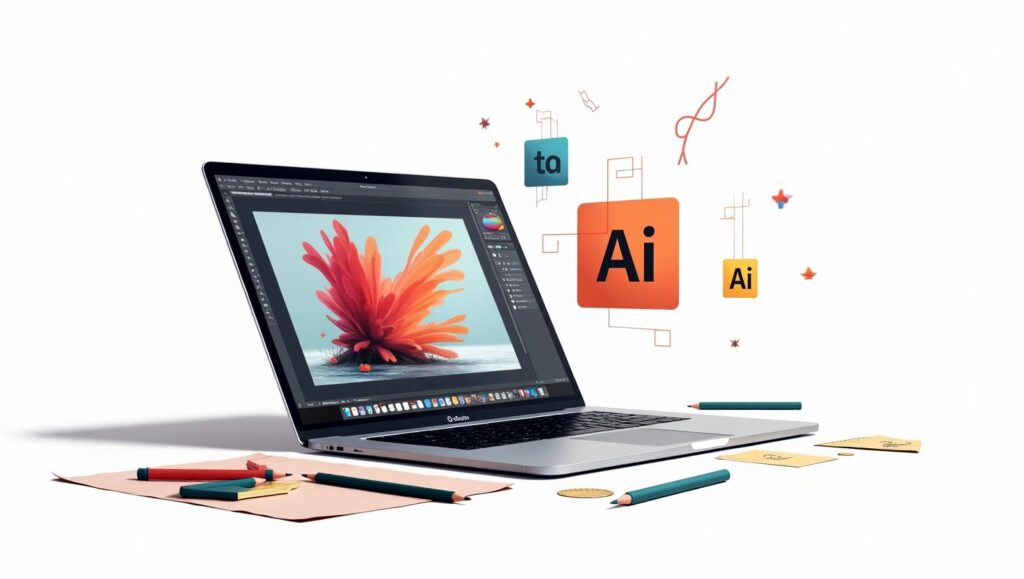
Type: Paid (Free trial available)
Platform: Windows, macOS
If you’re serious about pursuing best graphic design tools for beginners professionally, Adobe Illustrator is the go-to tool. It’s used by top designers around the world for creating logos, icons, typography, and complex illustrations.
Key Features:
- Precision vector design
- Integration with other Adobe apps
- Extensive typography tools
- Custom brushes and effects
Why it’s great for beginners: Though it has a steeper learning curve, beginners can start with tutorials and gradually master this powerful tool.
3. Figma – Collaborative Design

Type: Free & Paid
Platform: Web-based (with desktop apps)
Figma is a browser-based UI and best graphic design tools for beginners that’s widely used for interface design and collaboration. It’s especially ideal if you’re working in a team or planning to get into UX/UI design.
Key Features:
- Real-time collaboration
- Cloud-based autosave
- Works on any platform
- Design + prototyping in one tool
Why it’s great for beginners: It’s free to get started and encourages team-based design, which is perfect for learning in a group setting or classroom.
4. Gravit Designer – Browser-Based Versatility
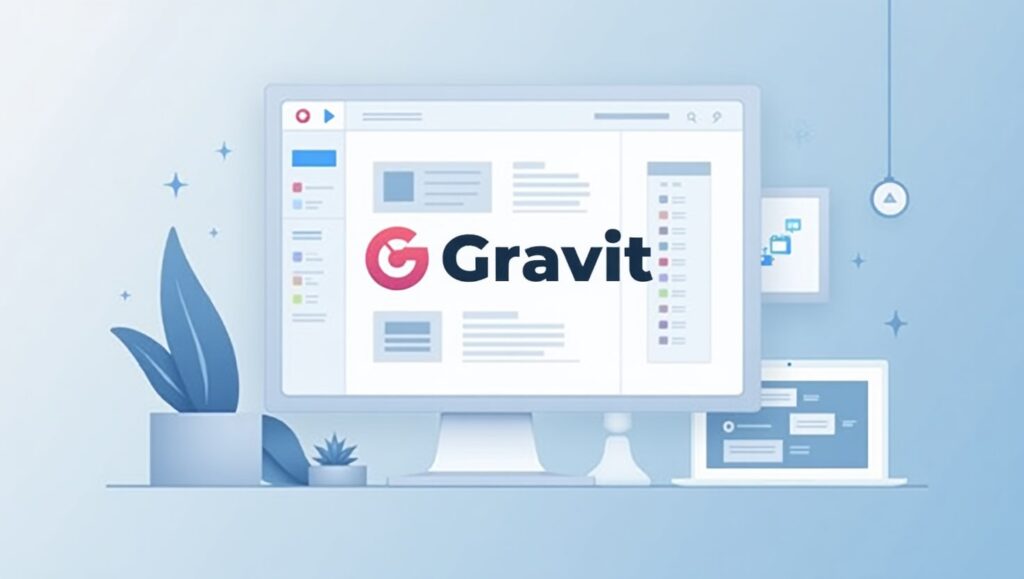
Type: Free & Paid (Gravit Designer Pro)
Platform: Web, Windows, macOS, Linux, Chrome OS
Gravit Designer offers a clean interface with essential tools for vector design. It’s ideal for creating UI designs, presentations, and illustrations, all from your browser.
Key Features:
- Works online and offline
- Modern user interface
- Cloud syncing
- Easy export options
Why it’s great for beginners: The learning curve is gentle, and it doesn’t require a powerful computer to run.
5. Vector – Free Vector Tool
Type: Free
Platform: Web, Windows, macOS, Linux
Vector is a completely free vector graphic design tool with a simple interface. It’s great for basic logos, icons, and infographics.
Key Features:
- Real-time sharing
- Simple and clean interface
- Free tutorials available
- Lightweight and fast
Why it’s great for beginners: Best graphic design tools for beginners without getting overwhelmed by advanced features.
6. Inkscape – Open Source Alternative
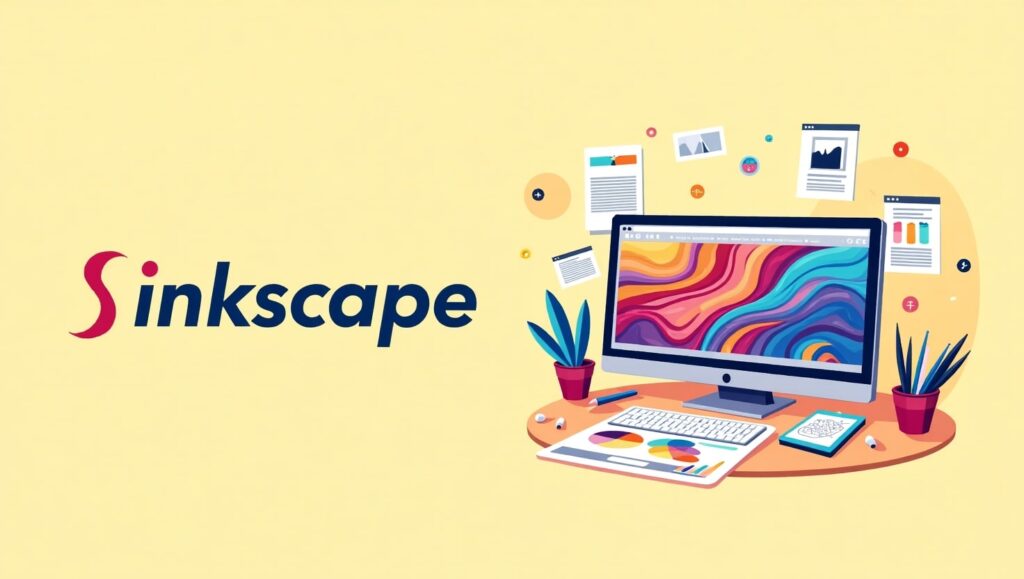
Type: Free (Open source)
Platform: Windows, macOS, Linux
Inkscape is a powerful free vector graphics editor that’s often compared to Adobe Illustrator. As an open-source tool, it has a strong community and regular updates.
Key Features:
- Advanced drawing tools
- Layer support
- File compatibility (SVG, AI, PDF)
- Custom extensions and add-ons
Why it’s great for beginners: Great for those who want full control over their design tools without paying for software.
7. Affinity Designer – Professional Quality at One-Time Cost
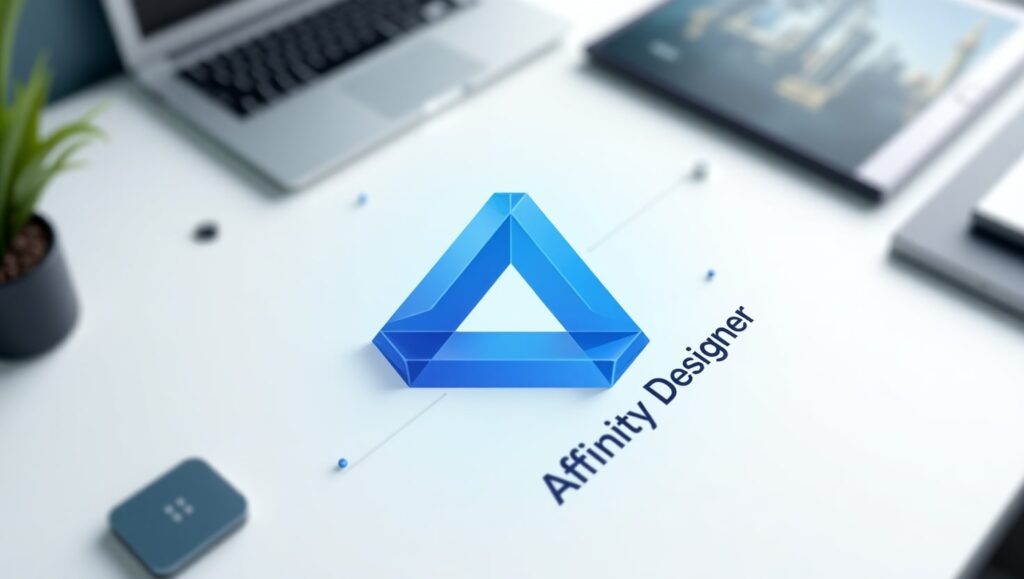
Type: Paid (One-time purchase)
Platform: Windows, macOS, iPad
Affinity Designer is a cost-effective alternative to Adobe Illustrator, offering professional features at a one-time price.
Key Features:
- Smooth vector and raster integration
- Responsive and lightweight
- Grid, snapping, and alignment tools
- Cross-platform performance
Why it’s great for beginners: Once purchased, you get lifetime updates. It’s a great investment without a subscription.
8. Pixlr – Easy Photo Editing
Type: Free & Paid
Platform: Web, iOS, Android
Pixlr is a lightweight photo editing tool that runs right in your browser. It’s perfect for beginners who want to edit images quickly for social media or blogs.
Key Features:
- AI-powered one-click edits
- Web-based—no downloads required
- Supports layers and effects
- Simple interface
Why it’s great for beginners: You can start editing without creating an account. Very beginner-friendly.
9. Krita – Digital Painting & Illustration
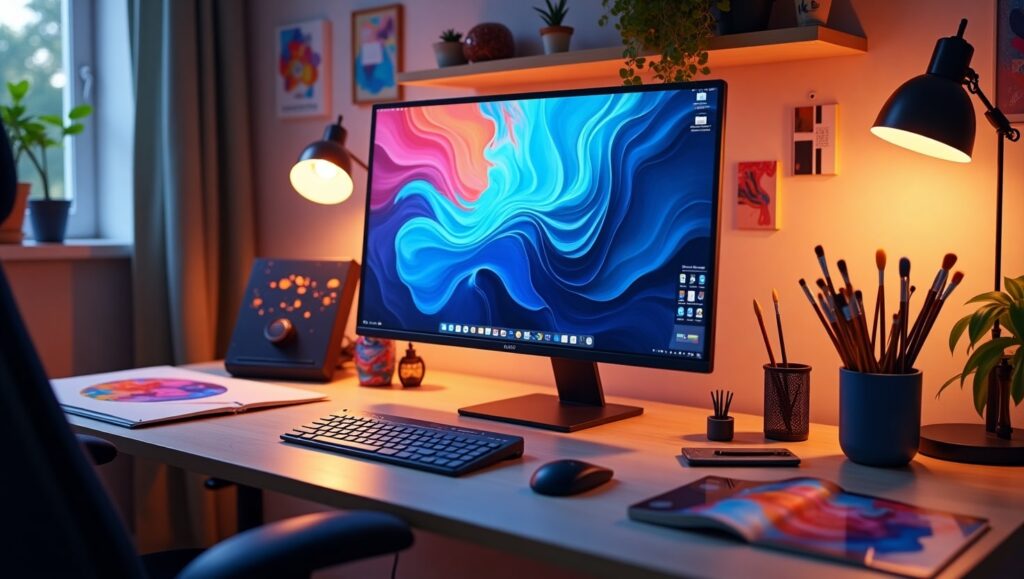
Type: Free (Open source)
Platform: Windows, macOS, Linux
Krita is best suited for digital illustration and painting, but it also offers graphic design tools for layout and composition.
Key Features:
- Brush customization
- Layer management
- Animation support
- Tablet-friendly interface
Why it’s great for beginners: Excellent for beginners interested in drawing and concept art.
10. Desygner – Mobile-Friendly Graphic Design
Type: Free & Paid
Platform: Web, iOS, Android
Desygner is a drag-and-drop graphic tool aimed at social media creators, bloggers, and marketers. It’s one of the easiest tools to use on a smartphone.
Key Features:
- Pre-made social media templates
- Mobile-first design
- Royalty-free image library
- Branding kit support
Why it’s great for beginners: If you’re creating graphics on the go, this is a must-have.
Tips on Choosing the Right Tool
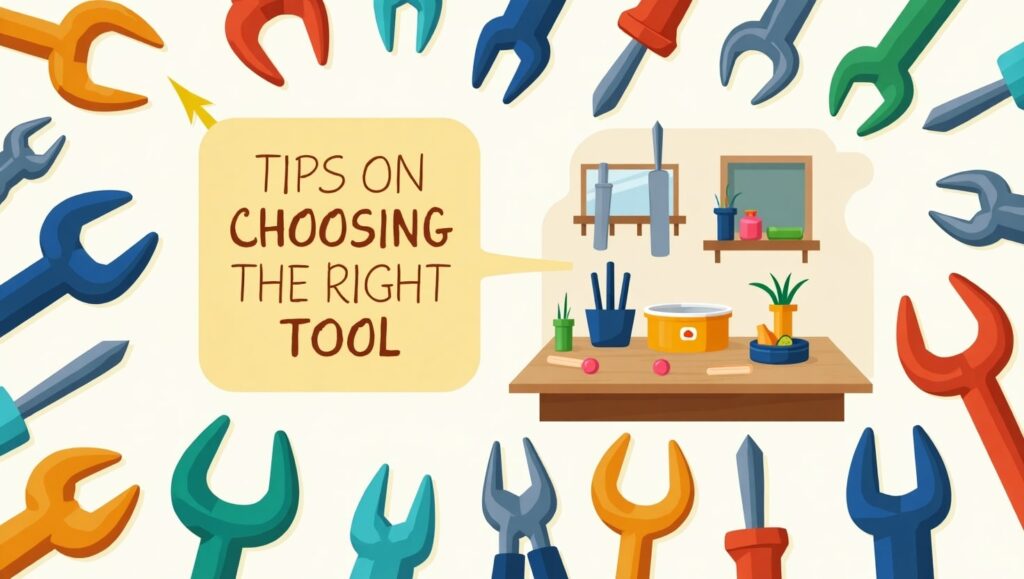
Choosing the best graphic design tools for beginners tool depends on your goals and workflow. Here are a few tips to guide your decision:
- Start Free: Explore tools like Canva, Vectr, and Inkscape to learn the basics without investment.
- Consider Your Goals: If you want to go professional, tools like Adobe Illustrator or Affinity Designer are worth learning.
- Try Before You Buy: Use free trials to test paid tools before committing.
- Use Community Resources: Many tools have active communities, free tutorials, and forums to help you learn faster.
- Match Tool to Task: Photo editing? Use Pixlr. UI design? Try Figma. Logo creation? Go with Illustrator or Vectr.
FAQ
What is the best free graphic design tool?
Canva is the best graphic design tools for beginners widely considered the best graphic design tools for beginners due to its ease of use, professional templates, and accessibility on all devices. For vector design, Inkscape is a top free choice.
Are paid tools worth it for beginners?
Yes, Best graphic design tools for beginners if you’re committed to building a career or serious hobby in graphic design. Tools like Adobe Illustrator and Affinity Designer offer features you’ll eventually need as your skills grow. However, you should explore free tools first to see what suits your style.
Conclusion: Start Simple, Grow Gradually
Every graphic designer starts somewhere. The key is to start simple—best graphic design tools for beginners, explore its features, and grow your skills at your own pace. Whether you begin with Canva, dive into Figma, or experiment with Inkscape, the most important thing is to keep creating.
Once you’re comfortable, consider investing in professional tools that open up even more creative possibilities. With the right tools and consistent practice, you’ll be creating stunning graphics in no time.
Graphics Design
Top 7 Essential Ways to Make T-Shirt Painting Design

Top 7 Essential Ways to Make T-Shirt Painting Design
T-Shirt Painting Design can be a great tool of creativity or creation of a fashion identity or even a business. T-Shirt Painting can be a gateway to unending crafts no matter whether this would be your first or fourth attempt in painting. In this article, we are going to guide you on the 7 best methods on how to make t-shirt painting design stand out, how to do it, what to use, what style, and some tips on how to make custom t-shirt painting better without fail.
What is T-shirt Painting Design?
T-Shirt Painting Design is a decoration process of painting or ink on a piece of cloth, generally t-shirt, to come up with a unique picture. It is a form of clothing art in which an artist, fashion admirer or hobbyist can express themselves creatively in something that they can use daily. T-shirt painting design can express mood, culture, personality and even be used to champion a cause; miniature paintings to splashes of abstract colors.
DIY trend, sustainability and fashion individuality have rocketed the popularity of the t-shirt painting within the past years. Well, now we are to see the seven most useful techniques that can help you to master this exciting art.
1. Select The Appropriate T Shirt Base and Fabric
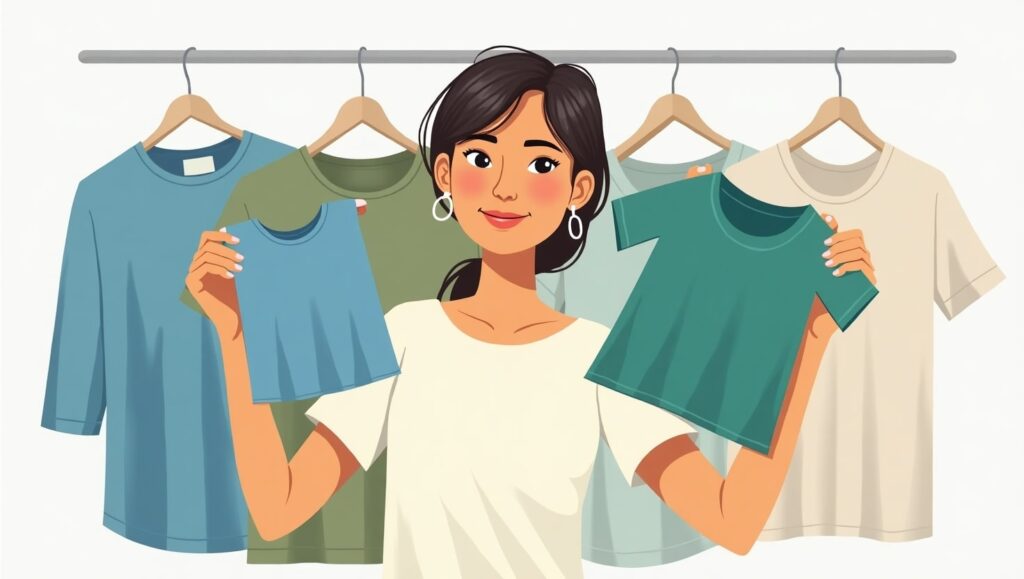
A t-Shirt Painting Design is the basis of every magnificent t-Shirt Painting. The choice of the material influences the quality of the adhesion of the paint, the hues of the palette and the durability of the design once washed.
The ideal fabrics of T-Shirt painting design:
- 100 percent Cotton: Trapping moisture is high on the scale and paint adhesion can also be achieved as well.
- Cotton-Poly Blend: Less absorbent and more long lasting.
- Bamboo or Organic cotton: an environmental-friendly and sustainable t-shirt painting design material.
Ensure that the t-shirt has already undergone a process of washing in order to draw away any factory treatment or shrinking. Get the finest painting experience on a smooth, non wrinkly surface.
2. Gather the Right Supplies
Without proper tools, even the most creative ideas for a t-shirt painting design can fail. Here’s a checklist of essential supplies:
Basic Materials:
- Fabric Paint (Acrylic-based or Water-based)
- Fabric Medium (optional, helps paint bond better)
- Paintbrushes of varying sizes
- Sponges or Rollers
- Palette or Mixing Tray
- Fabric Markers
- Pencil/Chalk (for sketching)
- Cardboard Insert (to avoid bleed-through)
These materials ensure your t-shirt painting design stays sharp, professional, and vibrant.
3. Sketch and Plan Your Design
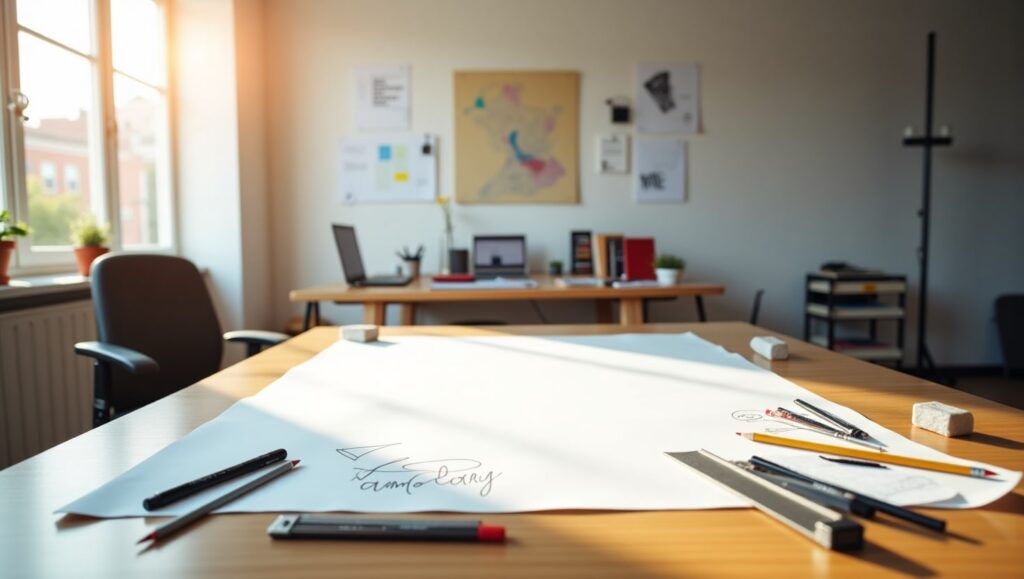
Before you dip a brush into paint, sketch your t-shirt painting design on paper or use a digital mockup tool. Planning is critical, especially for intricate designs.
Tips for Sketching:
- Start with light outlines.
- Consider color placement and negative space.
- Use stencils if you’re aiming for precision.
Planning your t-shirt painting design reduces mistakes and speeds up the painting process. You can even use transfer paper to trace your design onto the fabric if you’re not confident in freehand sketching.
4. Learn Different Painting Techniques
There are multiple ways to apply paint to a t-Shirt Painting Design. Understanding the right technique for your t-shirt painting design will make your artwork more dynamic.
Popular Painting Techniques:
- Freehand Brush Painting:
- Great for artistic expression and detailed artwork.
- Stencil Painting:
- Perfect for logos, patterns, or text. Ensures consistency.
- Sponge Painting:
- Adds texture and gradient effects to your t-shirt painting design.
- Splatter Technique:
- Offers a trendy, modern vibe. Use with contrasting colors.
- Block Printing:
- Involves carving a design into a stamp and repeating the pattern.
Each technique contributes something unique to the final look of your t-shirt painting design. Don’t hesitate to mix methods for a layered effect.
5. Learn to Use colors
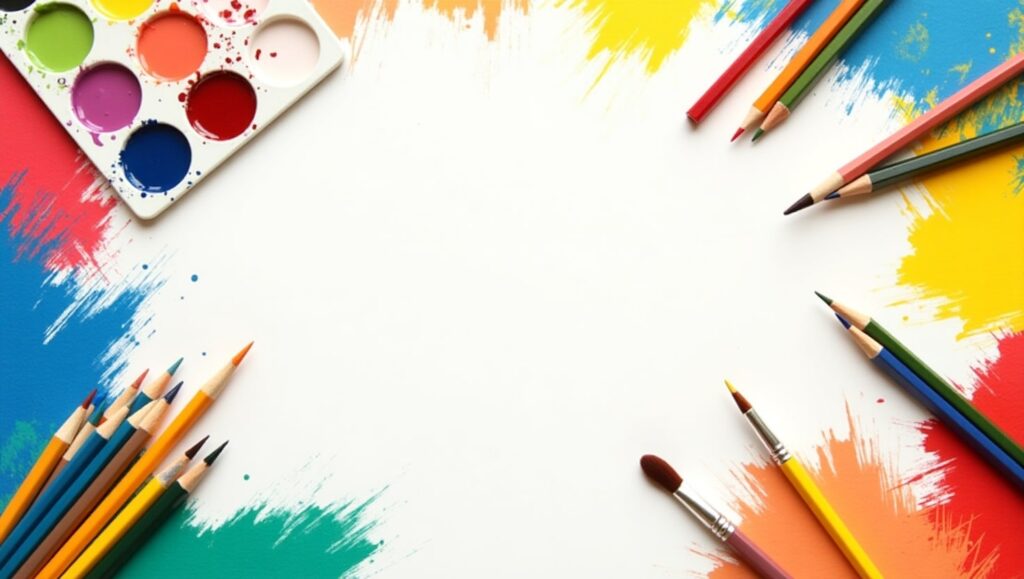
The color theory is very relevant in the area of painting t-shirts. Navigating a basic design with the compulsory color palette can turn a design to a work of art.
Know How to Select Colour:
- Take bold contrast by using complementary colors.
- Similar tints to bring out harmonious vibes.
- Apply white or black to make outlines/highlights.
Bear in mind that not all colors can be similar on textile and paper. Always test a small patch in case you want complete painting of t-shirt.
6. Use Fixing and Heat Fixing Methods
When you have painted your masterpiece that is the time to put the colors on so that they can be washed and worn.
T-Shirt Painting Design: Fixing Methods:
- Ironing: Apply a cloth or parchment paper on the painted area and press using medium heat setting on the iron within 3 to 5 minutes.
- Air-Drying: Leave your t-shirt painting design to dry up at least 24-48 hours.
- Heat Press: professional way of commercial-grade finish.
The paint is then sealed under the heat setting so it does not crack or fade, thus sealing into the fibers of your t-shirt painting design.
7. Care of Your Painted T Shirts
When the t-shirt painting is properly taken care of, then you get a long lasting life of the design and it remains vibrant.
Cleaning & Storing Information:
- Inside out wash in cold water.
- Never use bleach or strong detergents.
- Line dry or tumble low or machine dry.
- Iron inside-out, as required.
Once you have made something really well, you can be sure that your t-shirt painting design will keep shining all through the years.
Some Creative Ideas to Design T-Shirt Painting
Are you short of ideas? The popular t-shirt painting design themes are the following:
Minimalist Quotes
- Nature-based Patterns
- Graffiti and Street Style Painting
- The pop culture and Anime
- Geometric designs
- Motifs Tribal and Ethnic Motifs
- Personalized Name/Initials
The ideas can assist you to stimulate creativity and reach out to the target audience or customers.
The reason T-Shirt Painting Design is ideal with small businesses
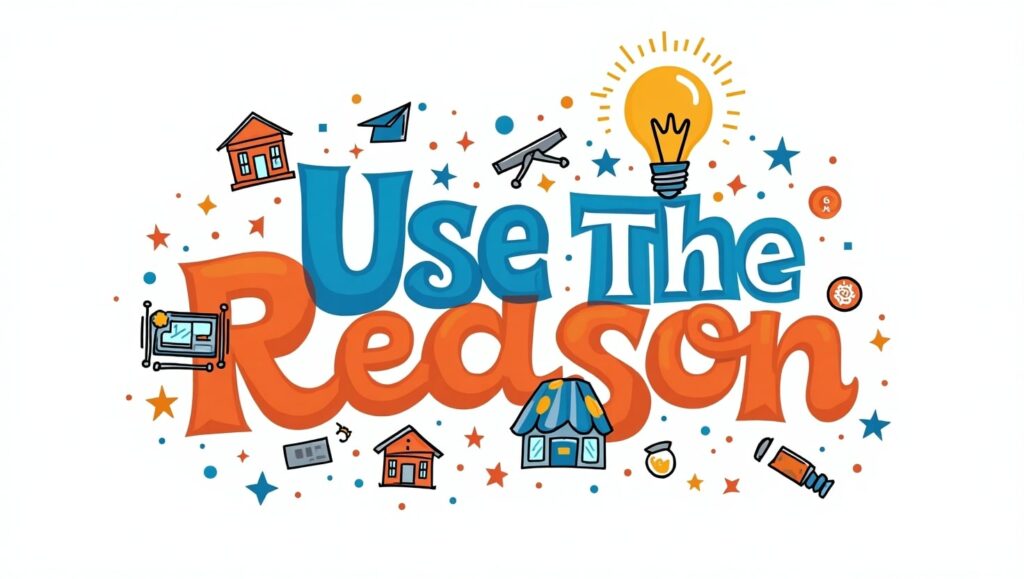
T-shirt painting design is also beautiful since the cost is cheap with high profit margin. These designers, painters, and designers are turning the ability to make money by selling personalized tees either online or in local fairs.
The advantages of T-Shirt painting Design as Business:
- No huge stock-out is needed.
- It is possible to tailor every design to the targeted niches.
- Handmade and green-friendly.
You may even provide customized t-shirt painting design services to such platforms as Etsy, Instagram, or your WordPress online store.
Questions and answers on T-shirt painting design
Q1. What should I use as a medium to paint t-shirt painting design, can I use normal acrylic paint?
Sure but in some fabric medium so that it does not crack and leave a soft finish.
Q2. How do I avoid loosing the paint in the washing?
After getting your paint design on your t-shirt completely dry, always take it and heat set it using an iron or heat press.
Q3. Which is the best color of t-shirt to be used?
T-shirts that are white and light in color are ideal for colored effects, but another to get dramatic effects is to use black t-shirts and use opaque or metallic paints.
Q4. What is the lifespan of painted t-shirt?
Well improvised t-shirt painting design will take a long time even after a lot of washings before it will begin to fade away.
Q5. Are children allowed to do t-shirt painting designs?
Absolutely! Just use paint that is washable and non toxic and monitor them as they set the heat.
Conclusion
The t-shirt painting design can be mastered by all types of artists, hobbyists, and business people. Selecting the appropriate fabric, preparing the design, printing it on, and employing the final heat fix, there are tips and methods to every process, which makes the result a beautiful and lasting t-shirt painting design. These 7 methods will determine what colorful and professional results you would achieve when creating a one-off work of your own or planning to launch a fashion brand.
The more you practice regularly and creatively, the more you will master t-shirt painting designs, and welcoming the world of art and even money.
-

 Graphics Design1 year ago
Graphics Design1 year ago7.Exploring the Importance of Color Theory Charts
-

 Graphics Design11 months ago
Graphics Design11 months ago10 Stunning Gradient Design Trends You Need to Know in 2024
-

 Graphics Design1 year ago
Graphics Design1 year ago15.The Importance of Effective Flyer Design in Marketing
-
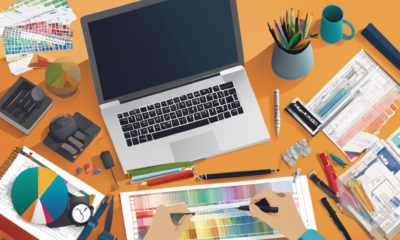
 Graphics Design1 year ago
Graphics Design1 year ago14.Mastering the Art of Print Design: Tips and Tricks
-

 Graphics Design1 year ago
Graphics Design1 year ago29.Retro Design Is Making a Comeback in Modern Spaces
-
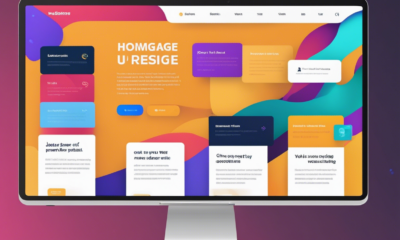
 Graphics Design1 year ago
Graphics Design1 year ago10.The Latest Trends in Web Design and Development
-
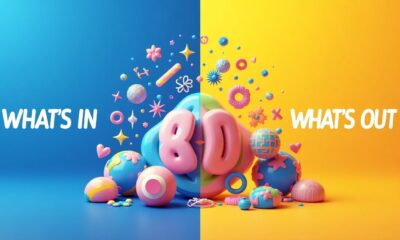
 Graphics Design6 months ago
Graphics Design6 months ago2025 Logo Design Trends: What’s In, What’s Out?
-
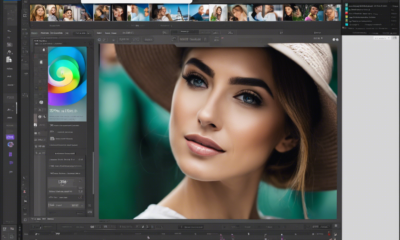
 Graphics Design1 year ago
Graphics Design1 year ago13.Exploring the Latest Trends in Photo Editing Software





disposable Temporary Email
September 28, 2024 at 2:13 pm
I’m often to blogging and i really appreciate your content. The article has actually peaks my interest. I’m going to bookmark your web site and maintain checking for brand spanking new information.
Muhammad Ubaid
September 28, 2024 at 2:32 pm
Thank you so much
Can I create a backlink to my website on your website?
disposable Temporary Email
September 28, 2024 at 2:36 pm
Pretty! This has been a really wonderful post. Many thanks for providing these details.
Muhammad Ubaid
September 28, 2024 at 2:37 pm
Thank you
free temp mail
October 3, 2024 at 12:11 pm
Pretty! This has been a really wonderful post. Many thanks for providing these details.
Winfred Zaruba
October 26, 2024 at 8:18 am
I am often to running a blog and i actually respect your content. The article has actually peaks my interest. I’m going to bookmark your site and preserve checking for brand spanking new information.
Mountsinai
November 7, 2024 at 6:01 am
Mountsinai For the reason that the admin of this site is working, no uncertainty very quickly it will be renowned, due to its quality contents.